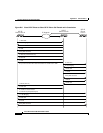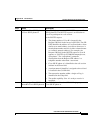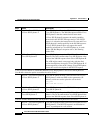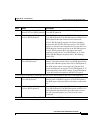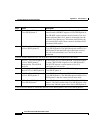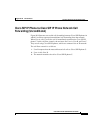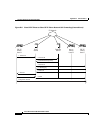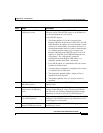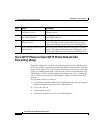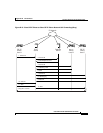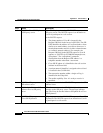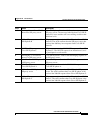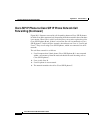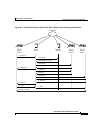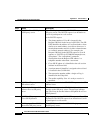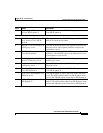
Appendix B SIP Call Flows
Call Flow Scenarios for Successful Calls
B-44
Cisco SIP IP Phone 7960 Administrator Guide
78-10497-02
Cisco SIP IP Phone-to-Cisco SIP IP Phone Network Call
Forwarding (Busy)
Figure B-10 illustrates successful call forwarding between Cisco SIP IP phones
in which User B has requested call forwarding from the network in the event the
phone is busy. When User A calls User B, the SIP proxy server tries to place the
call to Cisco SIP IP phone B and, if the line is busy, the call is transferred to Cisco
SIP IP phone C. In this call flow scenario, the end users are User A, User B, and
User C. They are all using Cisco SIP IP phones, which are connected via an IP
network.
The call flow scenario is as follows:
1.
User B requests that if their phone (Cisco SIP IP phone B) is busy the network
should forward incoming calls to Cisco SIP IP phone C.
2.
User A calls User B.
3.
User B’s phone is busy.
4.
The network transfers the call to Cisco SIP IP phone C.
6
200 OK—Cisco SIP IP phone C
to SIP proxy server
Cisco SIP IP phone C sends a SIP 200 OK response to the
SIP proxy server.
7
200 OK—SIP proxy server to
Cisco SIP IP phone A
SIP proxy server forwards the SIP 200 OK response to
Cisco SIP IP phone A.
8 ACK—Cisco SIP IP phone A to
SIP proxy server
Cisco SIP IP phone A sends a SIP ACK to the SIP proxy
server. The ACK confirms that the SIP proxy server has
received the 200 OK response from Cisco SIP IP phone C.
9 ACK—SIP proxy server to Cisco
SIP IP phone C
SIP proxy server forwards the SIP ACK to the Cisco SIP IP
phone C. The ACK confirms that Cisco SIP IP phone A has
received the 200 OK response from Cisco SIP IP phone C.
Step Action Description



